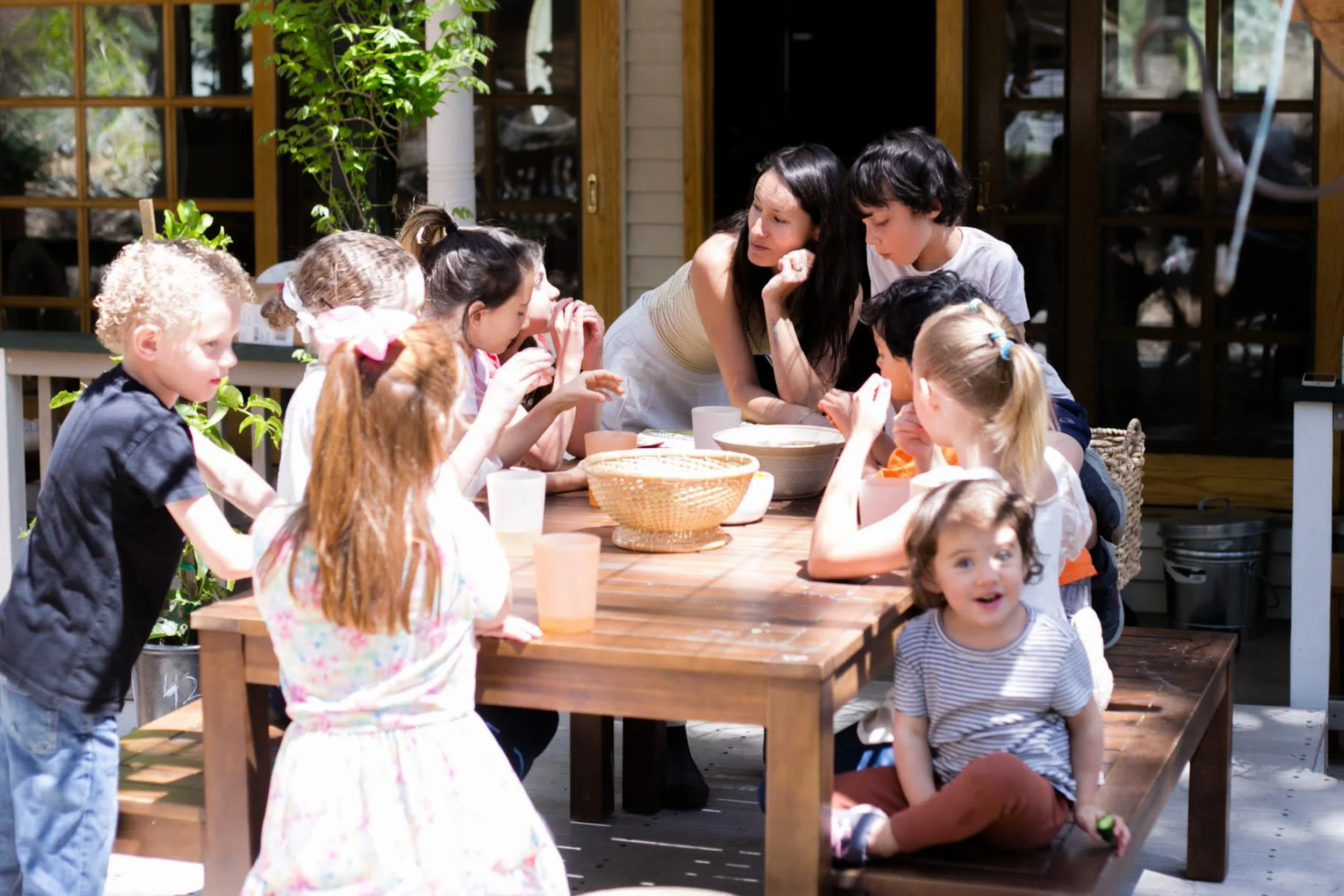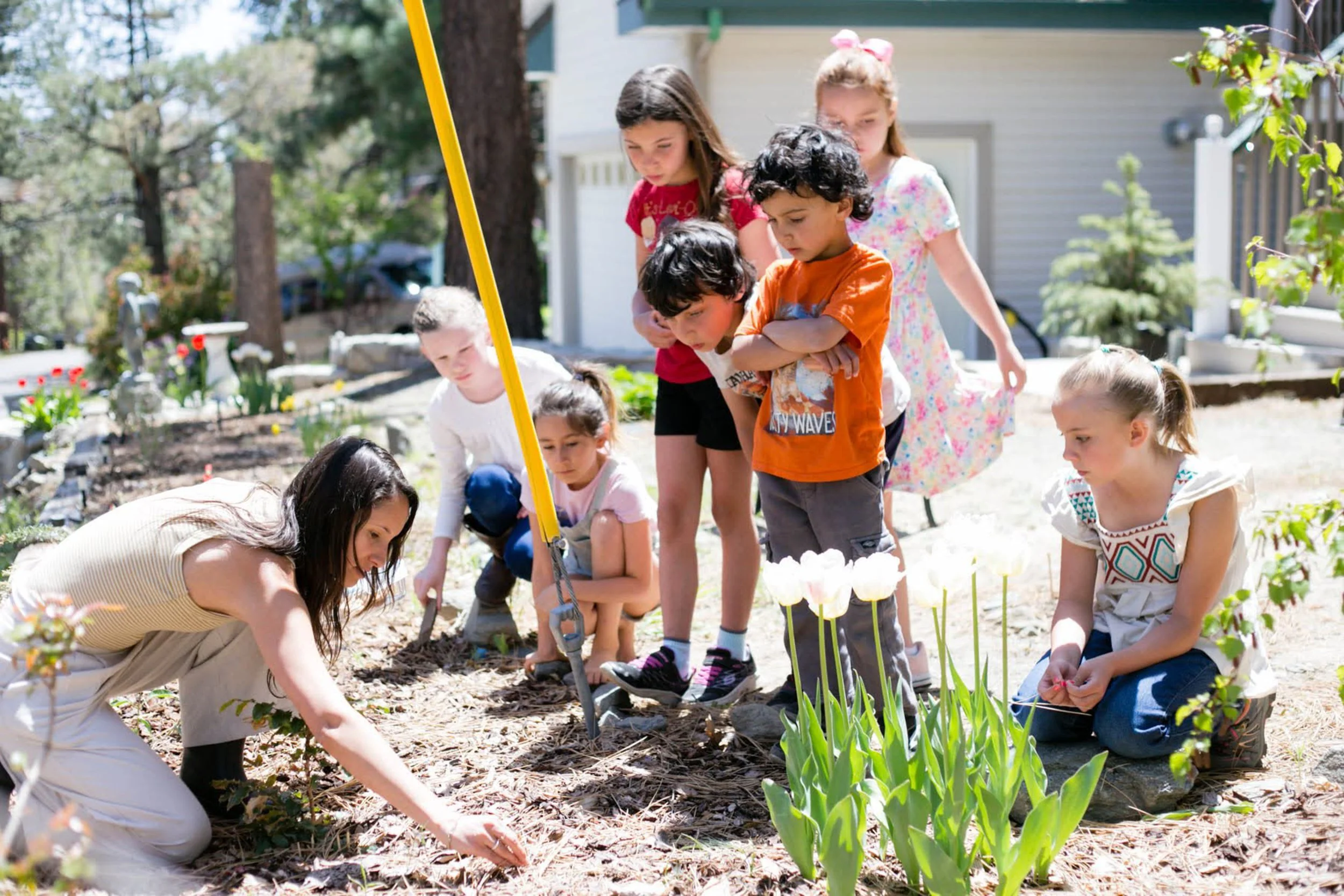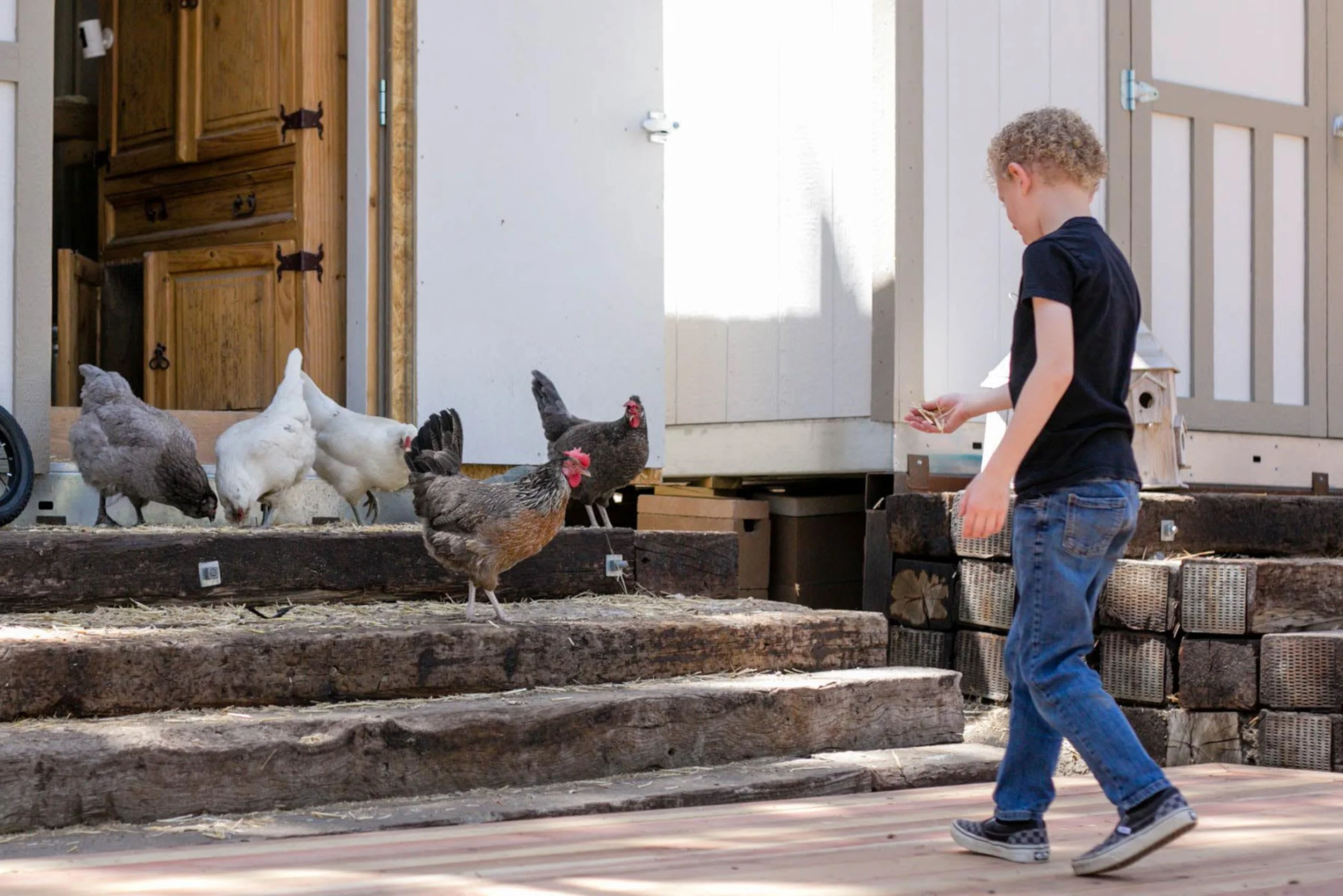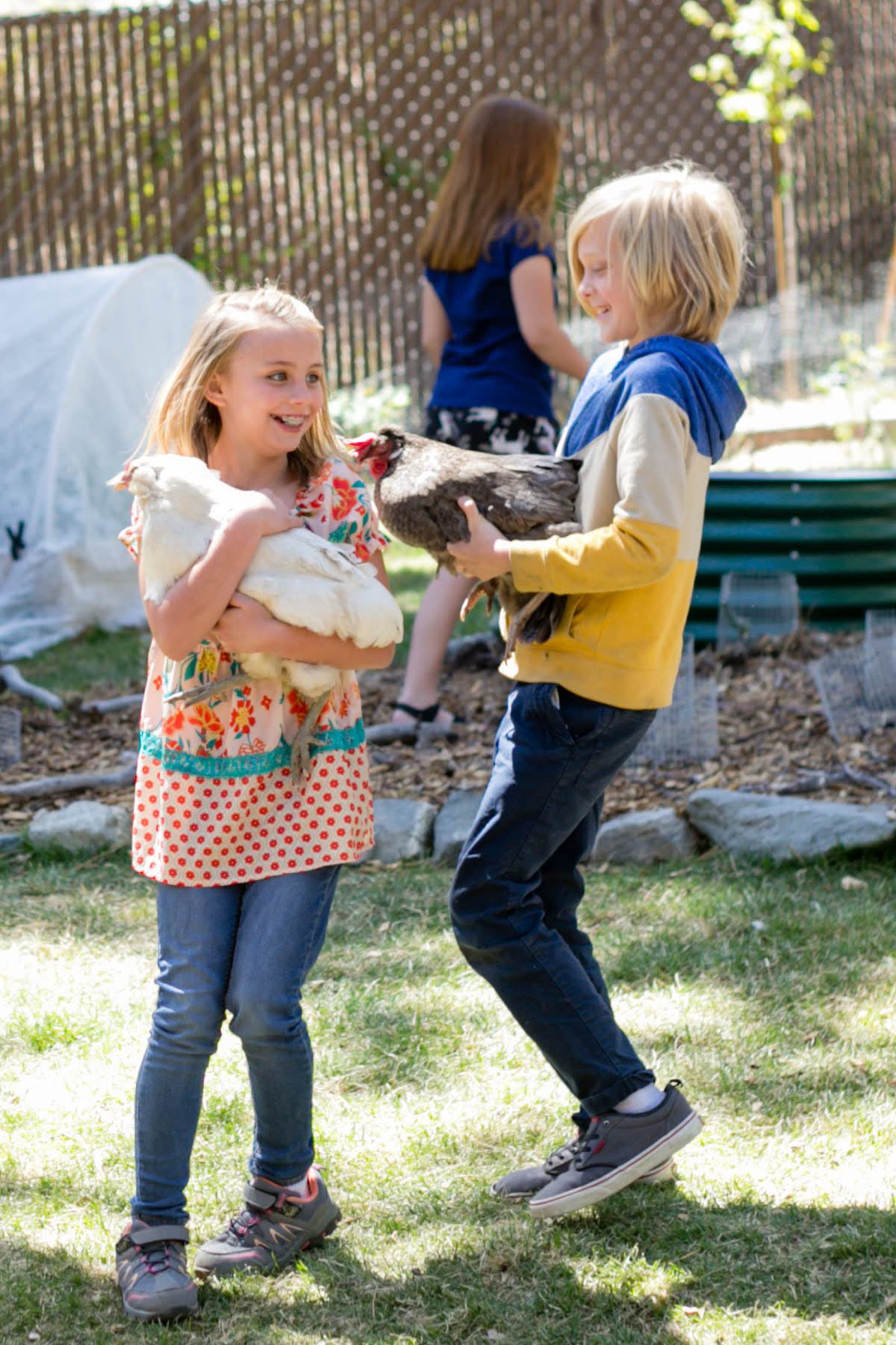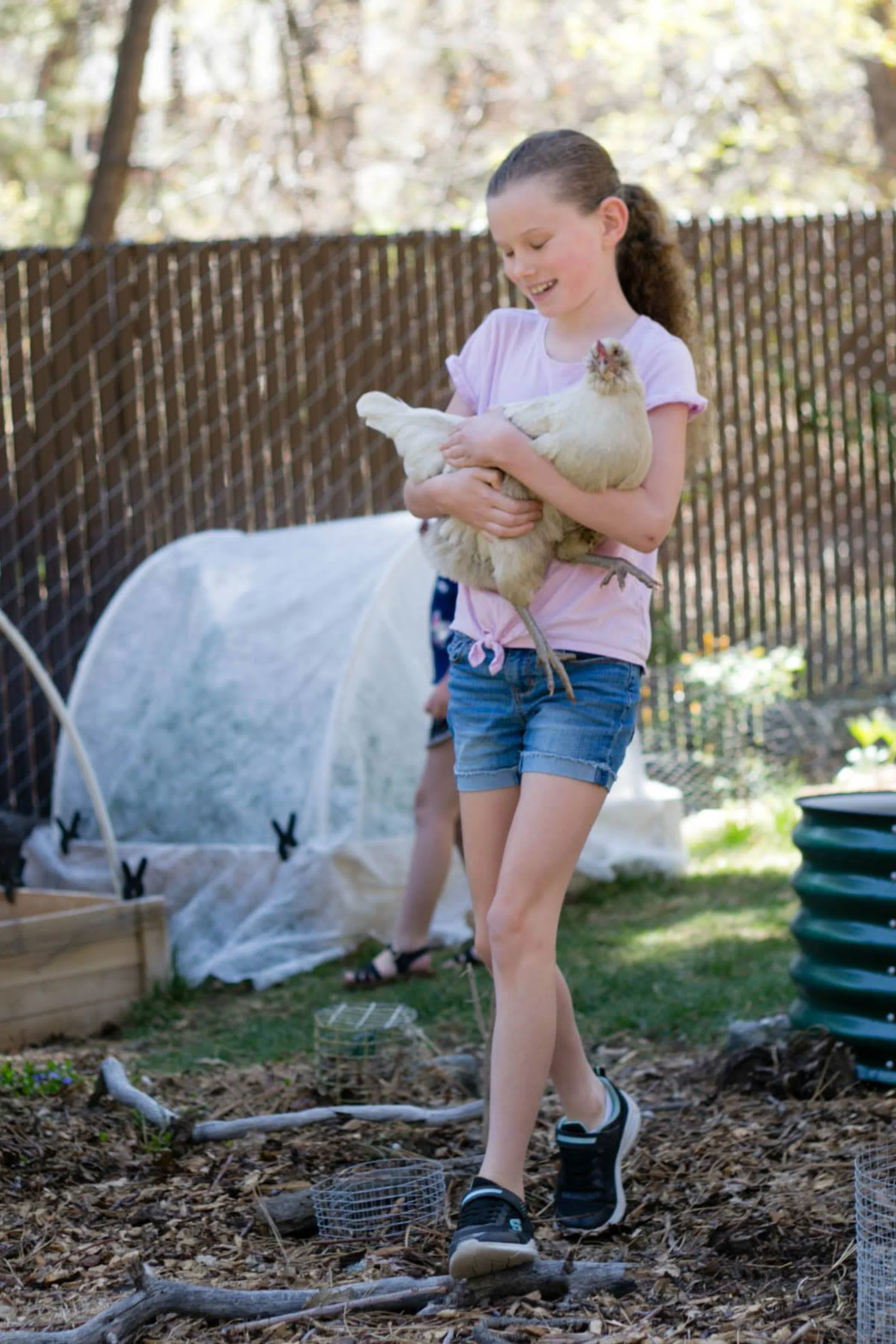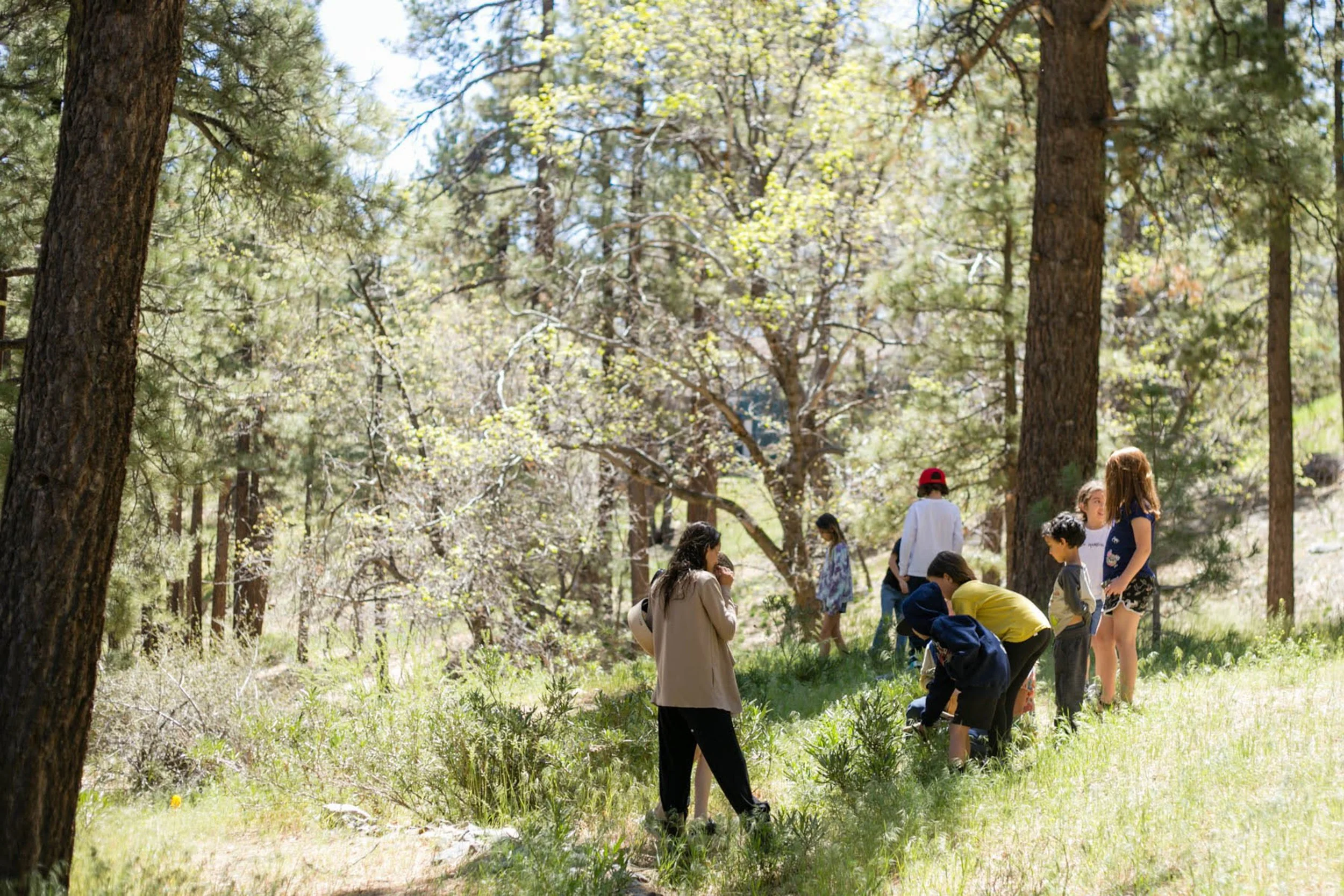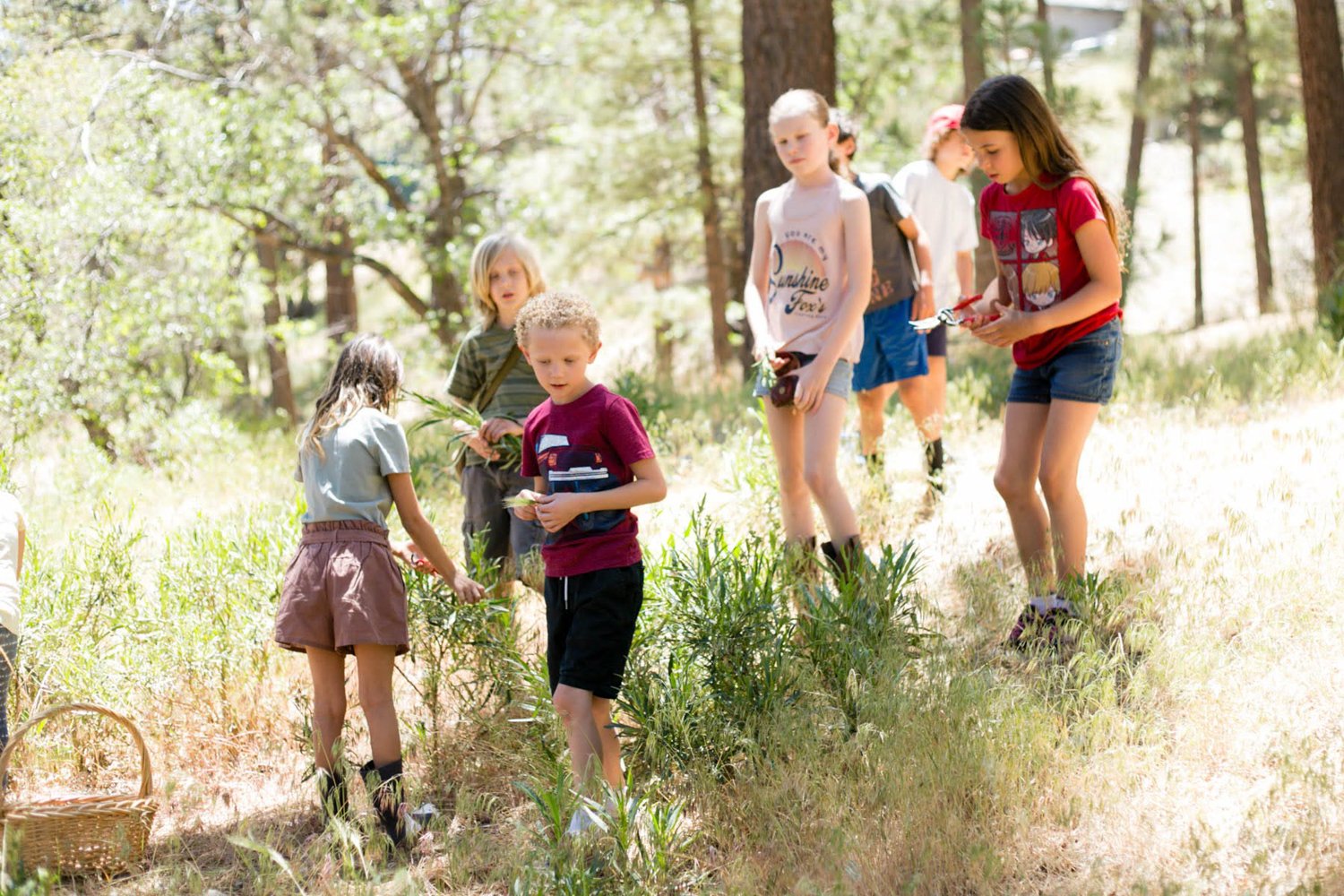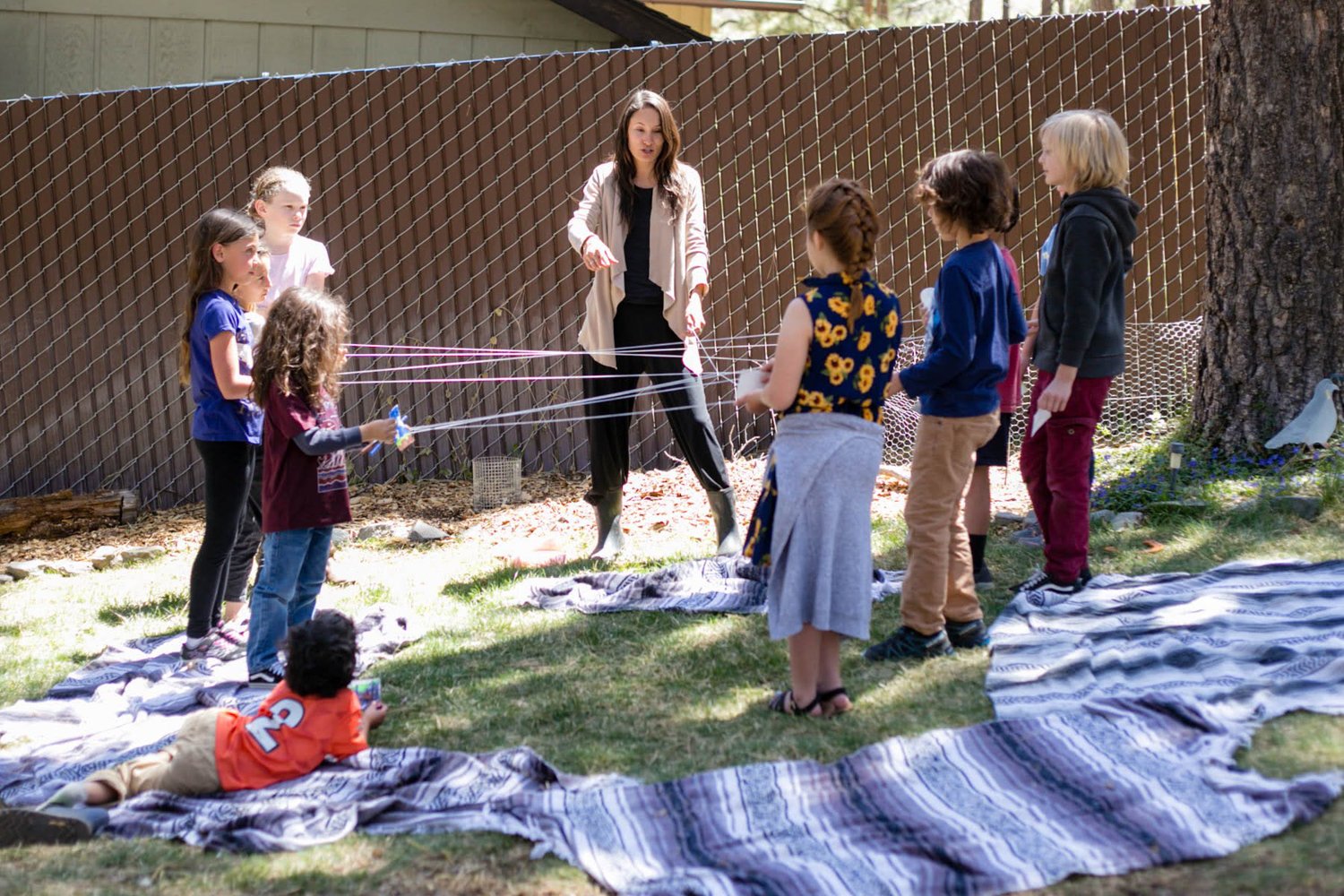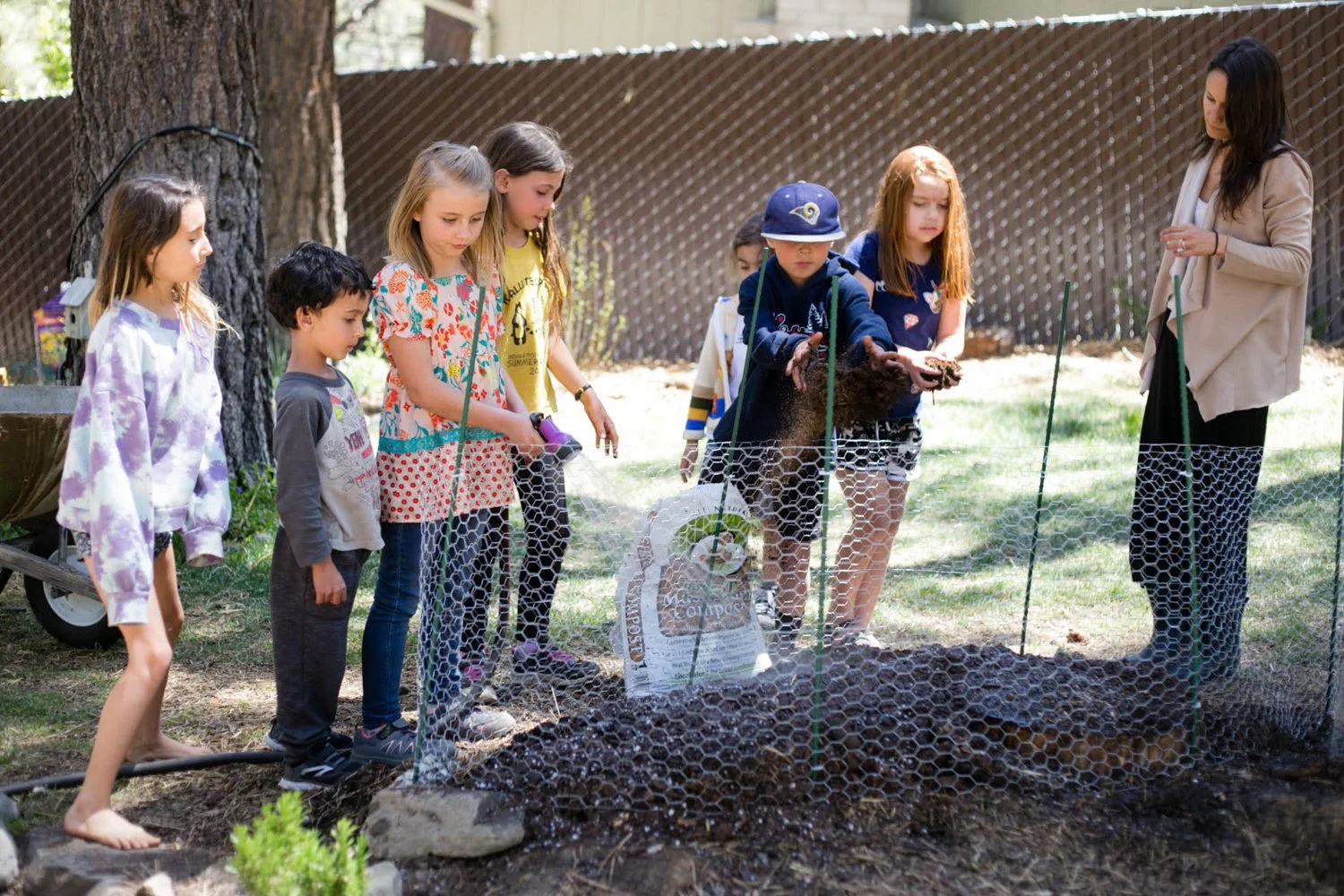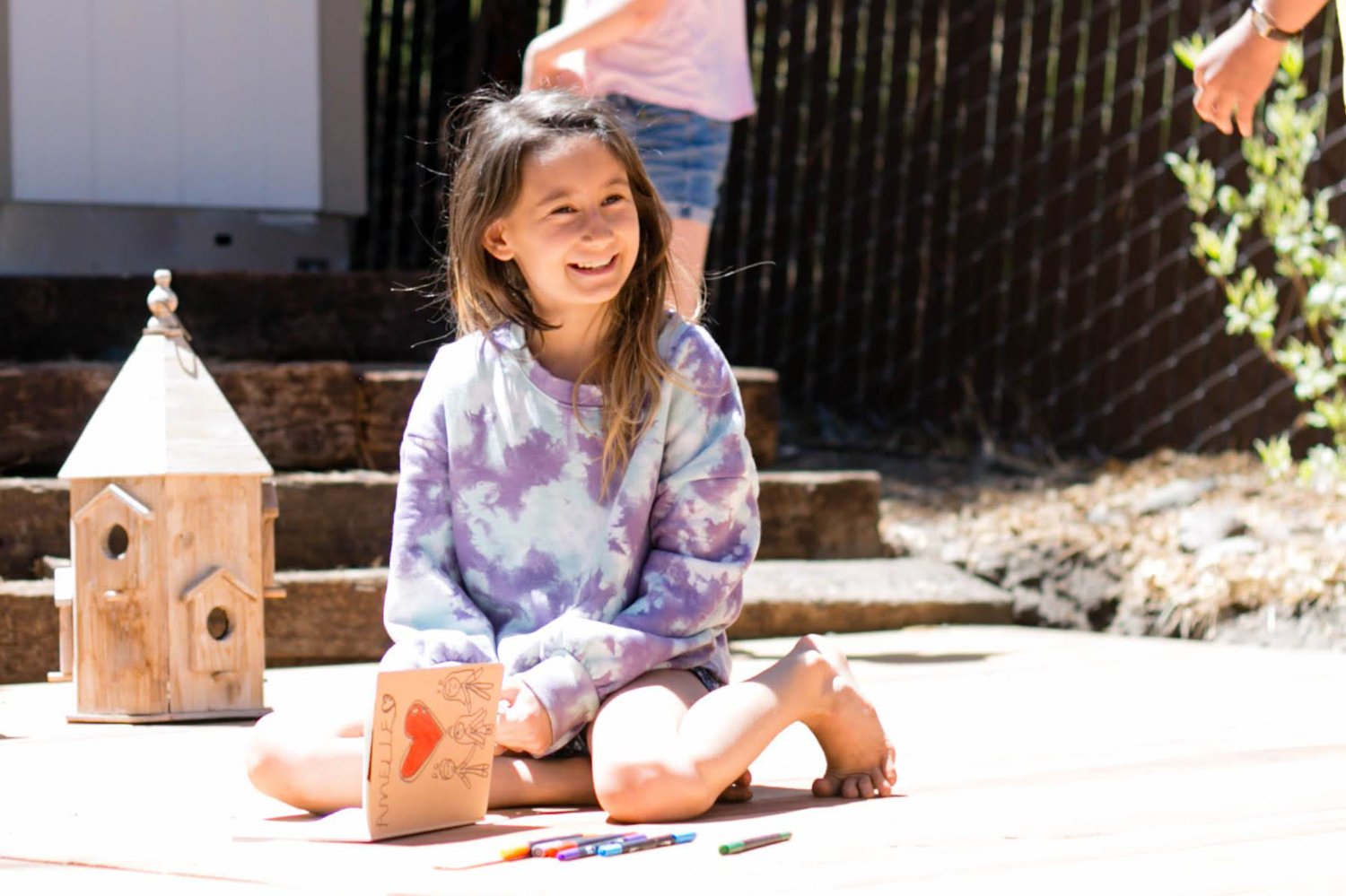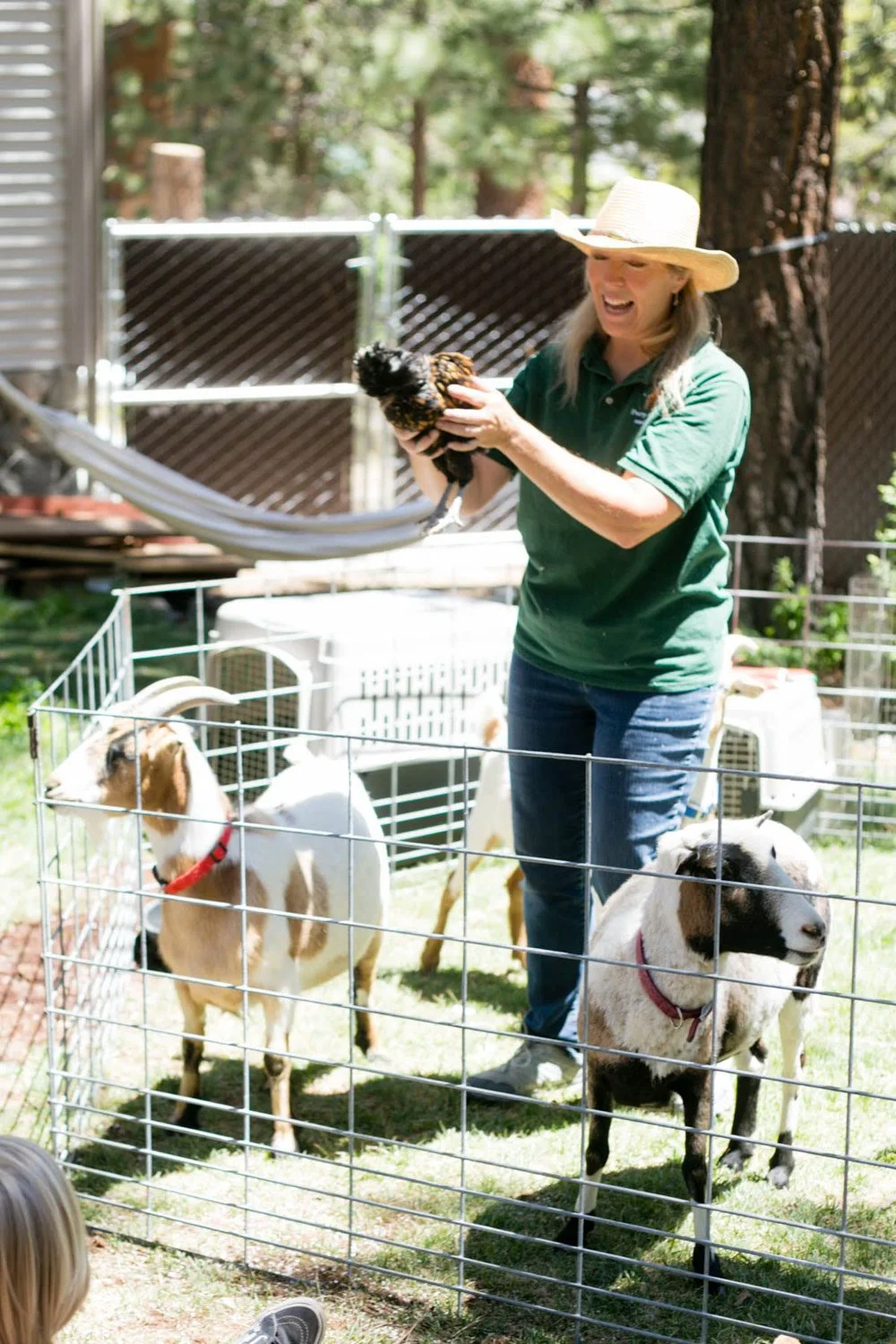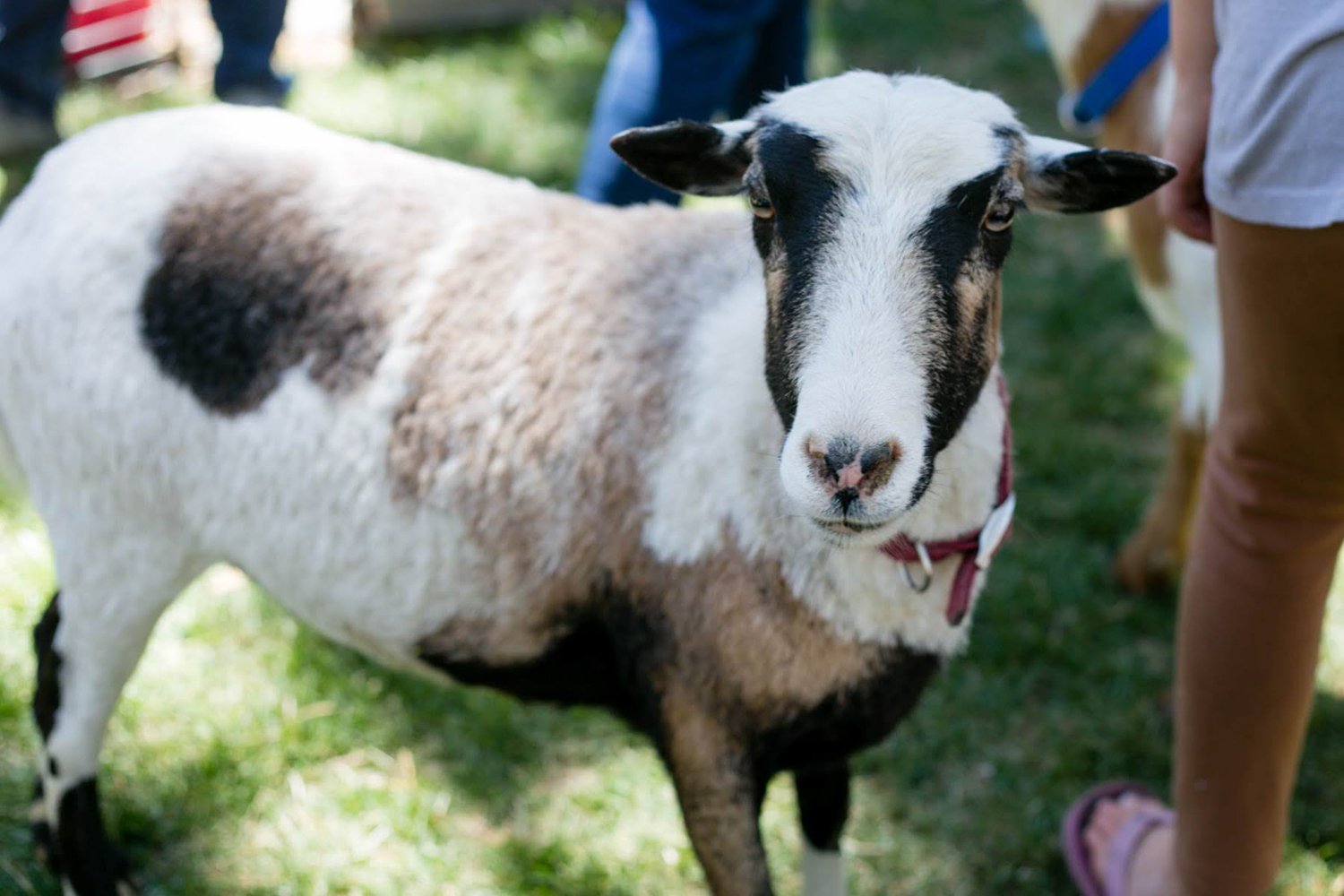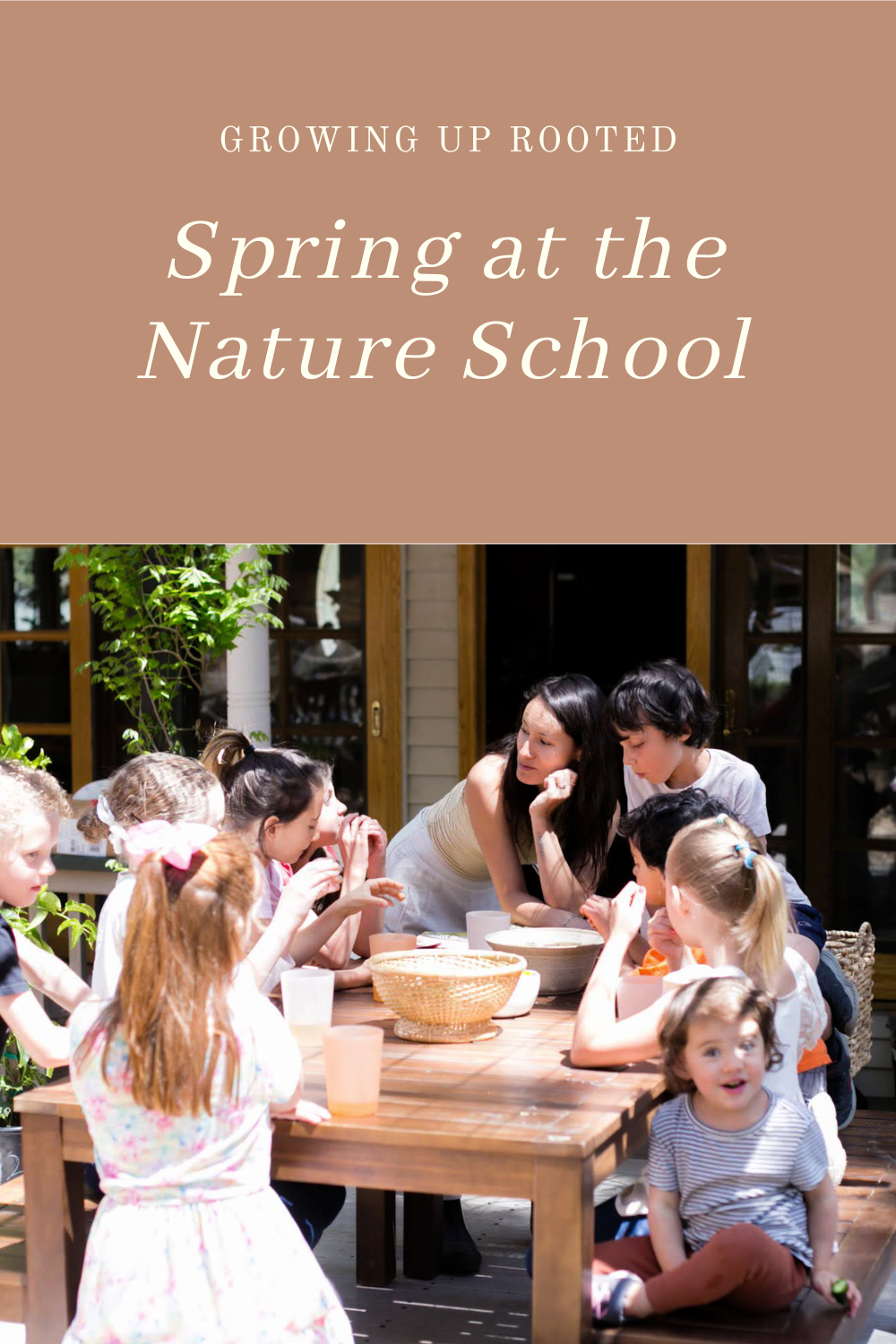Recap on Spring at the Nature School
Spring series at the Nature School ended a few weeks back. Here’s a quick photo recap of some of the fun we had this season.
All photos thanks to Michelle Scharfe.
1. We start most days reading a short picture book while sharing a light meal. The book and meal relate somehow to the theme of the day. The book is a great way to introduce new concepts we’ll later explore in the garden. The meals are always vegetarian and as waste-free as possible –– the goal is to give the kids a chance to try new fruits and vegetables, highlighting the value of responsible agriculture and the variety of unprocessed foods we can enjoy directly from nature.
Starting the day with a meal and a picture book gives us the chance to learn new concepts in a fun way.
2. After we finish the book, we often walk to the compost bin to discard any food scraps from our meal. There’s always something new to explore in the compost bins. Some seed that has sprouted or a bug crawling around. This is where the food cycle comes full circle. After enjoying foods like those that grow in our garden, the waste becomes the soil that will nourish next year’s plants. Experiencing this cycle multiple times helps children begin to understand where our food comes from and to respect and honor nature in it’s entirety. Food waste isn’t gross –– and the same goes for the insects that break it down and turn it into compost. Everything has a place and respecting this process makes us aware of the ways in which our interference sometimes breaks the cycle and creates problems.
Class observing closely what is happening in the compost bins.
3. Then, we might walk around noticing what is new in the garden. These moments of observation call for open minds and senses. We remember to walk slowly and notice where we step. As the season progresses, we are able to see a familiar place with new eyes and our senses begin to hone on those subtle differences. Becoming aware of the changes in nature through the season is a powerful gift at any age. Environmental stewardship begins with a mind that is sensitive and respectful of nature.
One spring morning, exploring the front garden in search of mushrooms.
4. Of course there’s always time to say hello to the chickens and the dog! Our animal friends have grown used to children coming and going through the garden and, so long as they are treated gently, they seem comfortable being held, pet and talked to during nature school.
Kids learn how to act around animals in a way that allows everyone to feel safe. The chickens are wise and grounding teachers at the nature school.
5. One day we had a couple of bunnies visit nature school. Their owner, one of our students, shared with us what they eat, and how to handle them so they could feel safe in our company.
6. We often walk to the open forest behind our home to explore, play and forage together.
The open land is healing for everyone, specially when energies are running wild. There’s a rope swing hanging from an old oak tree that gives the kids a chance to practice taking turns and safety around each other. And there is always something new that catches our eye and sparks interesting conversations.
When energies are running wild, a walk to the open forest is always a grounding solution.
Kids harvesting Yerba Santa one spring morning.
7. After a break, we spend some time strengthening concepts with an activity. Scavenger hunts, crafts, and games bring the kids together and provide opportunities for creative problem solving.
Understanding the concept of food webs in our ecosystem with an activity in the garden.
Girls helping each other on a nature scavenger hunt.
8. Gardening tasks are an important part of nature school because they are the building blocks of our garden space. Amending the soil before planting, watering properly, sowing seeds and weeding are some of the necessary steps to keep the garden going. I believe that having the opportunity to do these steps, not just once, but over and over, through the seasons and the years, will yield powerful lessons and a deep and growing understanding not only of nature, but of our relationship to it.
Kids sowing seeds in a three sisters garden in spring.
The group amending a new garden bed and watering it thoroughly.
9. At the end of most days, we sit down to reflect on our experiences and journal for a bit. This is a time of self reflection and creativity, and the kids love and look forward to it. Some of the most interesting conversations come up at this time, as kids have the space to talk while their hands are busy drawing.
Nature journaling at the end of class.
10. We ended the season with a visit from a local homeschool mama who runs a petting zoo called Party Ponies and Pets. Kristina has been caring for and training animals for decades and her wisdom is immeasurable. It was great to hear what she had to say about each animal and how her days are spent caring for them with the help of her daughter.
Kristina, from Party Ponies and Pets, sharing her wisdom with our class.

